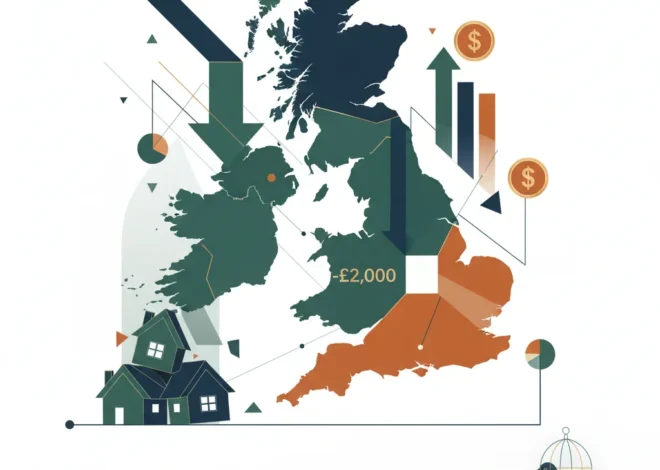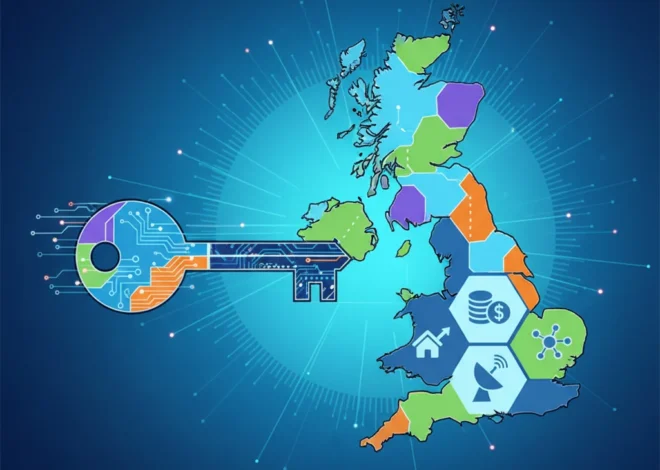
The £500 Million Energy Debt Reset: A Necessary Lifeline or a Risky Precedent for the UK Economy?
In a bold and controversial move, the UK’s energy regulator, Ofgem, has unveiled a plan that sits at the complex intersection of social policy, consumer finance, and market economics. The proposal aims to write off approximately £500 million in energy debt accumulated by struggling households. While this offers a crucial lifeline to thousands on the brink of financial crisis, it comes with a significant catch: the cost will be socialized, spread across the bills of millions of other customers. This decision is more than just a line item on a utility bill; it’s a significant event with far-reaching implications for the UK economy, the investing landscape, and the future of consumer debt management.
This article delves deep into the mechanics of Ofgem’s plan, analyzes the economic ripple effects, and explores what this means for investors, the banking sector, and the burgeoning world of financial technology. Is this a pragmatic solution to a post-pandemic, cost-of-living crisis, or does it set a dangerous precedent of moral hazard that could have long-term consequences?
Deconstructing the Debt Forgiveness Plan
At its core, the proposal is a direct intervention to address a mounting crisis. Total customer debt to energy suppliers has ballooned to a staggering £2.9 billion, a symptom of soaring energy prices and squeezed household incomes. Ofgem, whose mandate is to protect energy consumers, has identified a significant portion of this debt as realistically unrecoverable. Rather than allowing this “bad debt” to destabilize energy suppliers or force thousands of households into insolvency, the regulator has opted for a controlled demolition.
The mechanism involves allowing energy suppliers to recover a portion of these losses by adding a surcharge to everyone’s bills. Initial estimates suggest this could add an extra £16 to £17 per year to the average household’s energy costs. While a seemingly modest amount on an individual basis, it collectively raises the half-billion pounds needed to wipe the slate clean for the most indebted customers.
To better understand the trade-offs involved, let’s break down the key components of this policy and its potential impacts.
| Aspect of Ofgem’s Plan | Potential Positive Impact (The Upside) | Potential Negative Impact (The Downside) |
|---|---|---|
| Debt Forgiveness (£500m) | Provides immediate, critical relief for the most vulnerable households, preventing defaults and potential homelessness. Frees up disposable income for essentials. | Creates a “moral hazard” by potentially signaling that non-payment of essential bills may eventually be forgiven, discouraging timely payments in the future. |
| Cost Socialization (£16-£17/yr) | Spreads the cost thinly across millions of customers, making it manageable for most. Stabilizes energy suppliers by cleaning up their balance sheets from toxic debt. | Acts as a regressive levy, where financially stable households (including those on tight budgets) subsidize others. Contributes, albeit modestly, to inflationary pressures. |
| Regulatory Intervention | Demonstrates that the regulator is proactively managing a systemic risk within the energy market, ensuring stability and continuity of supply. | Increases the perceived regulatory risk for investors in UK utility companies, which can raise the cost of capital and deter future investing in critical infrastructure. |
This plan is, in essence, a calculated balancing act. It prioritizes preventing a wave of personal defaults and supplier failures over the principle that all debts must be paid by the debtor. The success or failure of this policy will be judged on whether it serves as a one-time reset or becomes a recurring necessity.
A Turning Tide? Unpacking the UK's Surprise Inflation Drop and What It Means for the Economy
The Broader Economic and Investment Implications
Beyond the immediate impact on household bills, Ofgem’s decision sends powerful signals throughout the financial ecosystem, from the wider economy to the stock market.
A Litmus Test for the UK Economy
From a macroeconomic perspective, this debt jubilee can be viewed in two ways. The optimistic take is that it acts as a form of targeted economic stimulus. By relieving the debt burden on those with the highest marginal propensity to consume, the freed-up cash is more likely to be spent on essential goods and services, supporting aggregate demand. It prevents a “debt deflation” spiral where defaults lead to reduced spending, which in turn hurts businesses and leads to job losses.
The pessimistic view, however, centers on the concept of moral hazard and the distortion of market signals. Widespread debt forgiveness, even if partial, can erode the culture of payment discipline. Furthermore, it’s an implicit admission that a significant portion of the population cannot afford basic necessities, a troubling indicator of the health of the consumer economy. For economists, this will be a key case study on the effectiveness and unintended consequences of non-governmental debt relief.
Navigating the Fallout for Investors
For those involved in investing and trading, particularly in the utilities sector, this news is a double-edged sword. On one hand, removing £500 million in bad debt from the books of suppliers like Centrica (British Gas) and SSE is a positive development. It cleans up their balance sheets, improves cash flow certainty, and reduces the risk of financial instability in the sector. This could be seen as a short-term positive for their stock prices.
On the other hand, it starkly highlights the immense regulatory risk associated with UK utilities. The fact that a regulator can unilaterally impose a levy on all customers to cover the debts of a few is a powerful reminder that profits and business models in this sector are subject to political and social pressures. This elevated risk can make international investors hesitant, potentially increasing the cost of capital for these companies when they need to fund the multi-billion-pound transition to renewable energy. The decision reinforces the idea that utility stocks are not just a play on energy markets, but also a bet on UK public policy.
The Unseen Role of Banking and Fintech Innovation
While Ofgem’s plan is a top-down solution, it intersects with the worlds of banking and financial technology (fintech), which are working on bottom-up solutions to the same problems.
Debt, Credit, and the Banking System
Traditionally, utility debt has occupied a grey area in the credit system. While severe defaults can eventually impact credit scores, this write-off preempts that outcome for thousands. In doing so, it prevents a cascade of negative credit events that would have made it harder for these individuals to access traditional banking products like loans and mortgages in the future. It’s a form of preventative maintenance for the nation’s collective credit health, albeit one that shifts the cost.
Can Technology Prevent the Next Crisis?
This is where the conversation pivots towards innovation. The current crisis underscores the limitations of a system based on monthly or quarterly billing cycles, which can lead to sudden payment shocks. The fintech sector is actively developing tools that could fundamentally change this dynamic:
- Smart Payments: The combination of smart meters and modern payment apps allows for “pay-as-you-go” energy consumption, helping users manage cash flow and avoid accumulating large, unmanageable bills.
- AI-Powered Analytics: Energy companies are starting to use AI not just to chase debt, but to predict it. By analyzing payment patterns and usage data, they can identify at-risk customers early and proactively offer tailored support, such as flexible payment plans or energy efficiency advice.
- Budgeting and Financial Wellness Platforms: A growing ecosystem of fintech apps helps consumers consolidate their financial data, providing a holistic view of their income and expenses. Integrating real-time energy usage data into these platforms could be a game-changer for household budgeting.
Looking further ahead, some technologists speculate about the potential of blockchain to create a more resilient and transparent energy grid. In a decentralized system, peer-to-peer energy trading via smart contracts could automate micro-transactions for energy used, potentially eliminating the concept of billing arrears altogether. While this remains a distant vision, it highlights a crucial paradigm shift: from managing debt after it occurs to using technology to prevent it from accumulating in the first place.
Conclusion: A Temporary Fix or a Sign of Things to Come?
Ofgem’s £500 million debt write-off is a complex, imperfect solution to a messy and urgent problem. It provides immediate and necessary relief to the most financially vulnerable while reinforcing the stability of the UK’s energy supply chain. However, it does so at the cost of higher bills for everyone else and by introducing a degree of moral hazard into the system.
For investors and financial professionals, it’s a stark reminder of the potent force of regulatory risk in essential industries. For policymakers and economists, it’s a real-world experiment in managing consumer debt at a massive scale. The ultimate verdict will depend on what happens next. If this is a one-time reset, coupled with long-term reforms to energy pricing, social safety nets, and the adoption of innovative financial technology, it may be remembered as a pragmatic crisis management tool. If, however, it becomes a recurring feature of the economic landscape, it will be seen as a symptom of a deeper, unresolved structural weakness in the UK economy.

